Bali Dive Sites
Bali is a diver’s paradise, offering some of the best dive sites in both the beginner and advanced categories. In this comprehensive guide, we will explore the best dive sites in Bali, including Tulamben, Amed, Padang Bai, and Nusa Penida. We’ll also discuss the best time to visit and provide essential travel tips to ensure an unforgettable diving experience.
So, gear up and dive into the best of Bali diving!
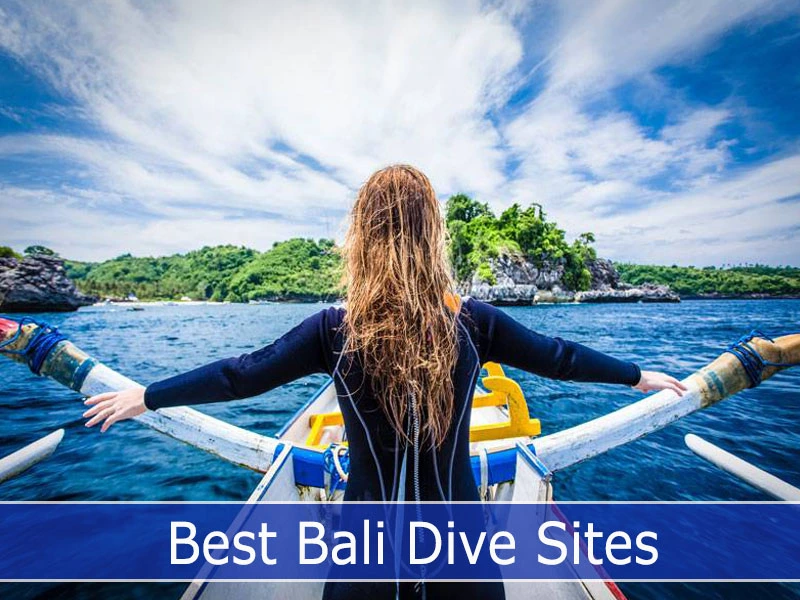
The best dive sites in Bali are truly incredible, considering how rich the island is in terms of scuba diving. Basically, on each of the island’s coasts, you will find dive spots, some of which are better than others, but rest assured, there is no shortage of diving opportunities.
In fact, the number of Bali dive sites is quite extensive, with close to 100 spots, not even including the north side of the island. Each of these dive sites boasts unique features, making some more suitable for beginners while others cater to more experienced divers, yet all share an extraordinary beauty that will leave you in awe.
Tulamben
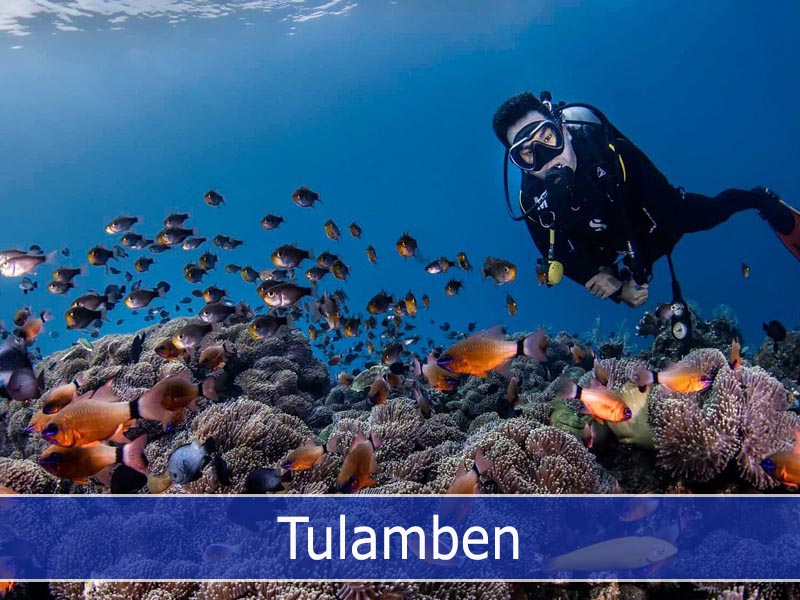
Tulamben is one of the most popular and best places for scuba divers on the northeastern coast of Bali. One of the main attractions for scuba divers is the USAT Liberty shipwreck. The shipwreck, a relic from World War II, is now adorned with vibrant coral reefs and teeming marine life, making it a captivating site for underwater photographers and nature enthusiasts.
As scuba divers descend into the depths, they’ll be greeted by schools of colorful fish, graceful sea turtles, and an array of fascinating critters that have made the wreck their home. The clear visibility and calm waters of Tulamben make it one of the most popular and best places for scuba divers for night diving, allowing visitors to witness the mesmerizing nocturnal activities of marine creatures under the moonlit sky.
Beyond the USAT Liberty shipwreck, Tulamben offers an abundance of other captivating dive sites waiting to be explored. The Coral Garden, for instance, showcases an explosion of coral formations that host an impressive diversity of marine life.
Divers can also venture to the Drop-Off, where the sea floor plummets to greater depths, providing an exhilarating experience of diving along a dramatic wall filled with various fish species and occasional pelagic visitors.
Whether you’re an experienced diver or a beginner eager to discover the wonders of the underwater world, Tulamben’s rich marine biodiversity and convenient accessibility promise an unforgettable diving adventure for all. Moreover, the village’s laid-back charm, picturesque beaches, and friendly locals create a relaxing and welcoming atmosphere, making Tulamben an alluring destination for both diving enthusiasts and travelers seeking a tranquil coastal escape.
All of the dive sites in Tulamben are shore dives which make the dive sites easily accessible.
1. USAT Liberty Wreck
Tulamben boasts one of the best places to visit for diving enthusiasts. It is home to a renowned shipwreck diving spot, steeped in history and teeming with fascinating underwater marine life. Whether you are a beginner or an advanced diver, this site caters to all levels of expertise. Interestingly, the wreck is divided into two halves, the first of which lies in shallow waters, providing an incredible experience even for snorkelers or free divers.
The USAT Liberty, lies on a gently sloping sand with its bow pointing towards the northwest and its stern to the southeast. The ship’s length of approximately 120 meters (394 feet) and its varying depths make it accessible for divers of all skill levels.
Visibility ranges from 10 to 30 meters (33 to 100 feet), depending on the season and weather conditions. The water temperature is generally warm, averaging around 28°C (82°F), which makes for comfortable diving conditions.
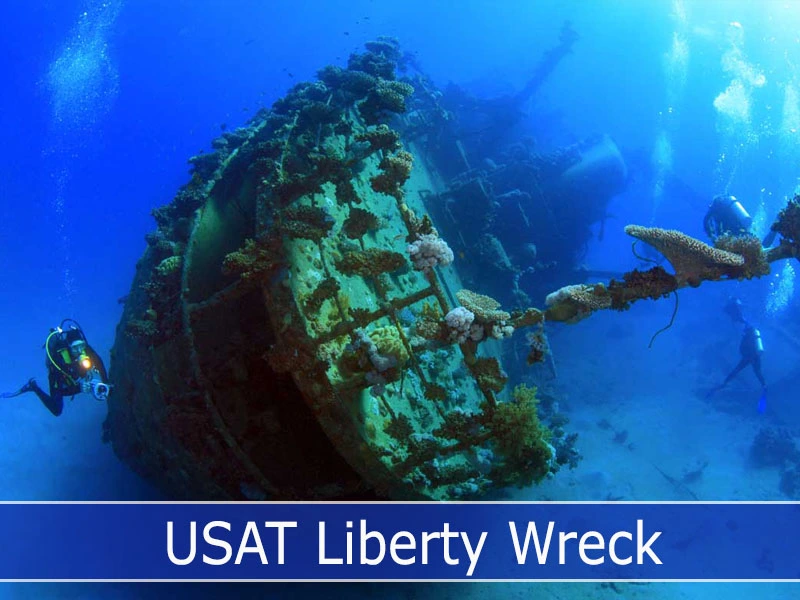
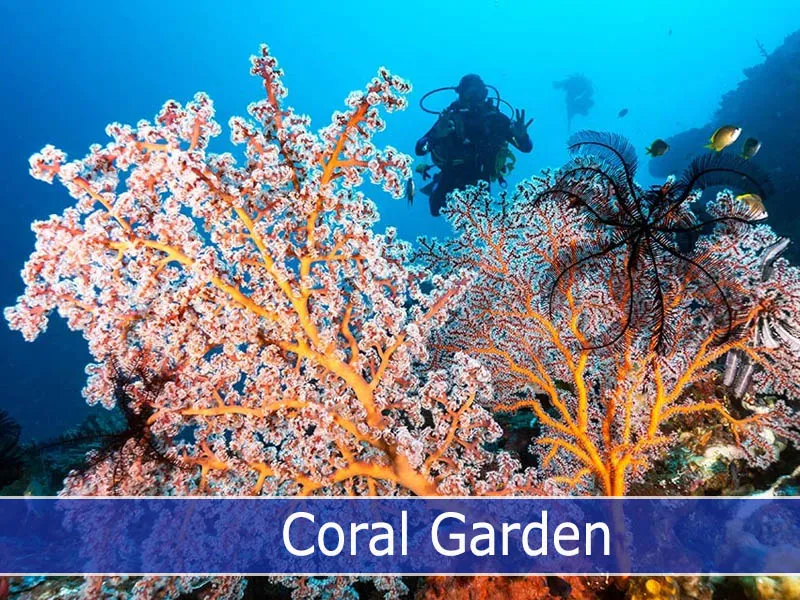
2. Coral Garden
Coral Garden is one of the best places to visit for diving enthusiasts, known for its vibrant and diverse coral formations. It offers a fantastic diving spot, where both natural and artificial elements have been incorporated by the locals to enhance the overall experience.
Coral Garden is a shallow dive, ranging from 3 to 18 meters (10 to 60 feet), make it a great dive for beginners or for conducting courses. It is typically done as a second dive after the shipwreck.
The corals here come in all shapes and sizes, forming an intricate labyrinth that serves as a habitat for an abundance of marine life. Schools of tropical fish flit in and out of the coral formations, their vibrant hues adding to the already stunning underwater panorama. From the graceful butterflyfish to the elusive seahorses, every dive at Coral Garden offers a chance to encounter unique marine species.
One of the most intriguing aspects of Coral Garden is the fusion of natural and artificial elements beneath the waves. Local divers and conservationists have lovingly added carefully crafted underwater sculptures and structures to enhance the dive site’s allure. These additions not only provide additional surfaces for corals to grow but also create captivating focal points for divers to explore.
Coral Garden stands as a testament to the delicate harmony between humans and nature, showcasing how responsible tourism and conservation efforts can result in a thriving underwater ecosystem for generations to come.
3. Drop-Off
A beautiful wall dive site that starts at a shallow depth and plunges down to around 70 meters (230 feet), offering a chance to see various pelagic species. The coral of this wall is simply stunning packing various camouflage fish.
A beautiful wall dive site that starts at a shallow depth and plunges down to around 70 meters (230 feet), offering a chance to see various pelagic species. The coral of this wall is simply stunning packing various camouflage fish.
The reef is a haven for a wide variety of marine life, with schools of colorful fish darting in and out of the coral crevices. It’s not uncommon to spot mesmerizing creatures like lionfish, angelfish, and butterflyfish gliding effortlessly through the water, their brilliant hues adding to the kaleidoscope of underwater beauty.
Massive sea fans and sponges adorn the vertical surface, swaying gracefully with the ocean currents. Keep an eye out for larger inhabitants of the deep, such as barracudas, reef sharks, and even occasional visits from majestic manta rays and gentle whale sharks.
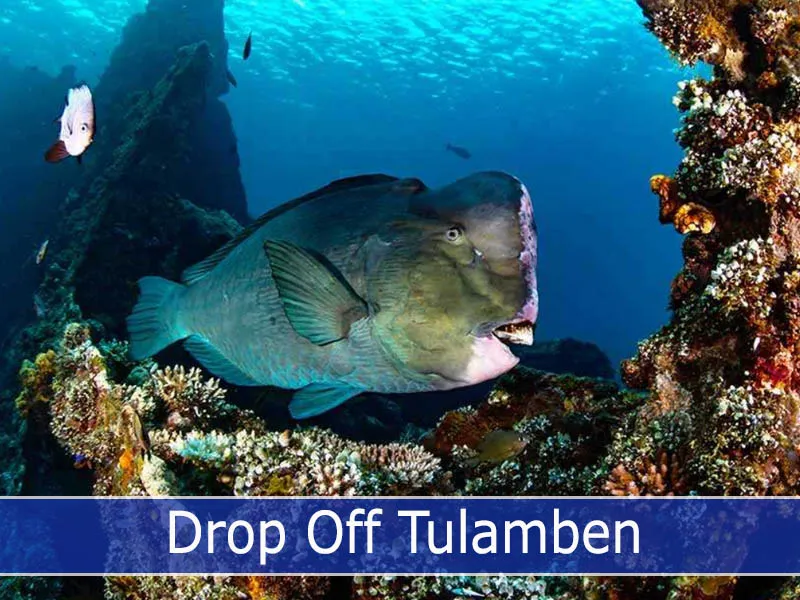
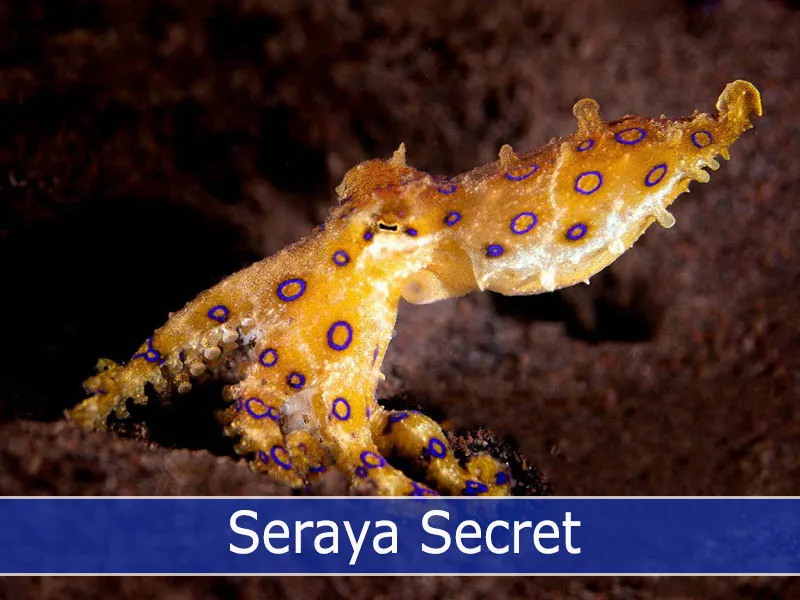
4. Seraya Secret
Seraya Secret is a hidden gem in the world of diving, tucked away from the usual tourist spots, making it a paradise for those seeking a more intimate and exclusive underwater experience. Its remote location adds to the allure, attracting avid divers who are willing to venture off the beaten path in pursuit of extraordinary encounters. The diversity of macro life found here is truly astounding, drawing underwater photographers from all corners of the globe to capture the stunning beauty of its unique critters.
One of the most sought-after sightings at Seraya Secret is the elusive Sean The Sheep, a charming and peculiar species of nudibranch with a distinct woolly appearance. Divers revel in the challenge of locating these tiny creatures among the nooks and crannies of the seabed, showcasing their photography skills as they document these captivating moments.
Beyond Sean The Sheep, the underwater landscape is adorned with the vibrant colors of Butterfly Nudibranchs, fluttering gracefully like living jewels amidst the coral reefs. Furthermore, the enigmatic Ghost Pipe Fish adds an element of mystery to the diving experience, blending seamlessly with its surroundings, almost appearing like a spectral apparition floating in the depths. For underwater enthusiasts with an eye for the extraordinary, Seraya Secret offers an unparalleled opportunity to immerse oneself in a world of captivating and rare marine life.
5. Melasti Reef
Located off the coast of Bali, Indonesia, Melasti Reef is a hidden gem for diving enthusiasts seeking to explore the mesmerizing world of macro photography. Its abundant and vibrant coral formations create a picturesque underwater landscape, offering divers an opportunity to capture breathtaking close-up shots of the tiniest marine creatures.
The reef’s shallow depth makes it an ideal spot for beginners and experienced divers alike, as it provides ample sunlight that enhances the colors and details of the marine life.
One of the main attractions at Melasti Reef is the myriad of nudibranch species that call this underwater wonderland home. These colorful and captivating sea slugs showcase an array of intricate patterns and designs, making them a favorite subject for macro photographers seeking to capture the beauty of the miniature world beneath the waves.
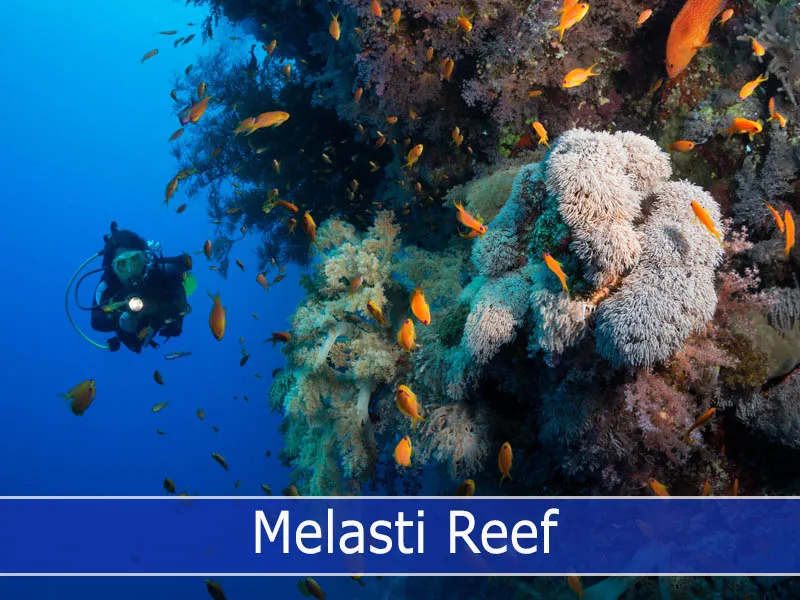
The reef teems with various species of crustaceans, including small crabs and shrimps, which add to the diversity of macro life and further pique the interest of underwater photographers.
Despite being overshadowed by the more popular Seraya Secret, Melasti Reef remains a haven for those who appreciate the art of macro diving. Its peaceful and less-crowded atmosphere allows divers to immerse themselves fully in the underwater spectacle and take their time observing and capturing the delicate details of the marine creatures that inhabit this enchanting reef.
Whether you are an avid macro photographer or simply a curious diver in search of unique aquatic encounters, Melasti Reef promises an unforgettable experience that celebrates the intricacies of the underwater world.
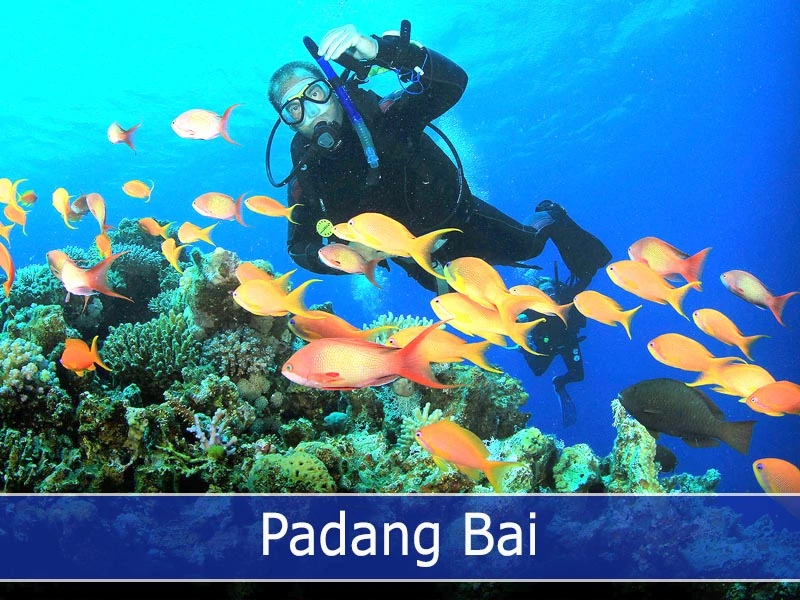
Padang Bai
Padang Bai is a charming small fishing village located on the south eastern corner of Bali, serving as one of the main harbors to the neighboring island of Lombok and the Gili Islands. It is part of the best Bali dive sites because Padang Bai offers a total of 9 dive sites including the already famous Blue Lagoon. All with amazing coral reefs, diverse tropical marine life and perfectly suitable for beginners.
Padang Bai is also easily accessible from the entire south and west coast, generally a short 1 to 1.5 hour car trip from Sanur or Kuta for example.

1. Blue Lagoon
Blue Lagoon is by far the most popular dive site in Padang Bai. A small sheltered bay with crystal-clear waters, featuring a vibrant coral reef and a variety of marine life, including reef fish, moray eels, and occasionally sharks and turtles. Both diving and snorkeling are amazing here either by boat or directly from the Blue Lagoon beach.
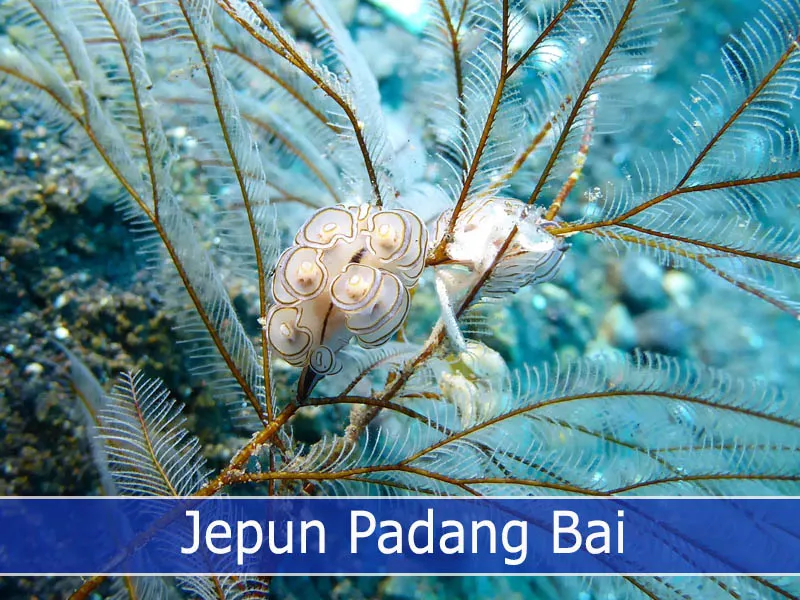
2. Jepun
Typically visited as a second spot after Blue Lagoon, Jepun is a diverse dive site with an artificial reef, where you can find sunken boats and statues, and a wide range of marine life, from macro critters to schools of colorful fish.
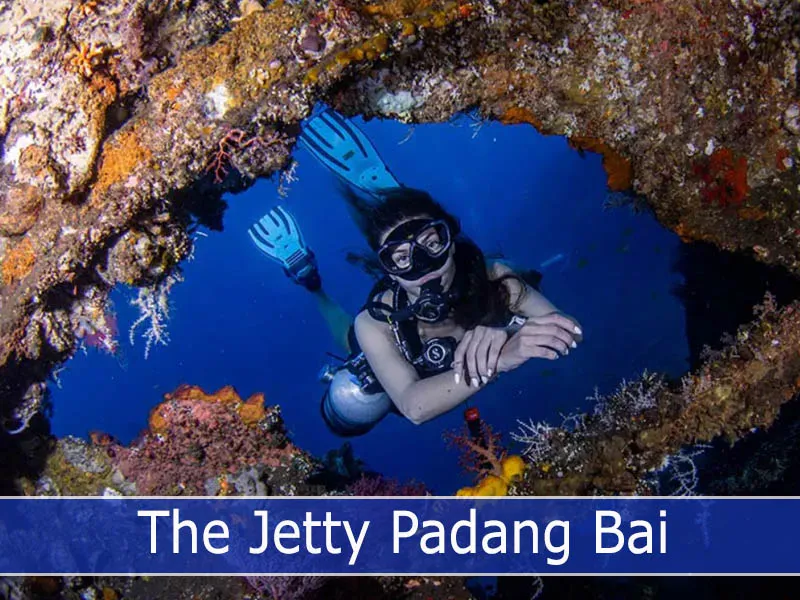
3. The Jetty
An intriguing dive site around a ferry docking pier, known for its muck diving opportunities and encounters with unique critters such as frogfish, seahorses, and octopuses. It is one of the most unique best Bali dive sites where Frog fish as well as juvenile Frog fish are easily found.
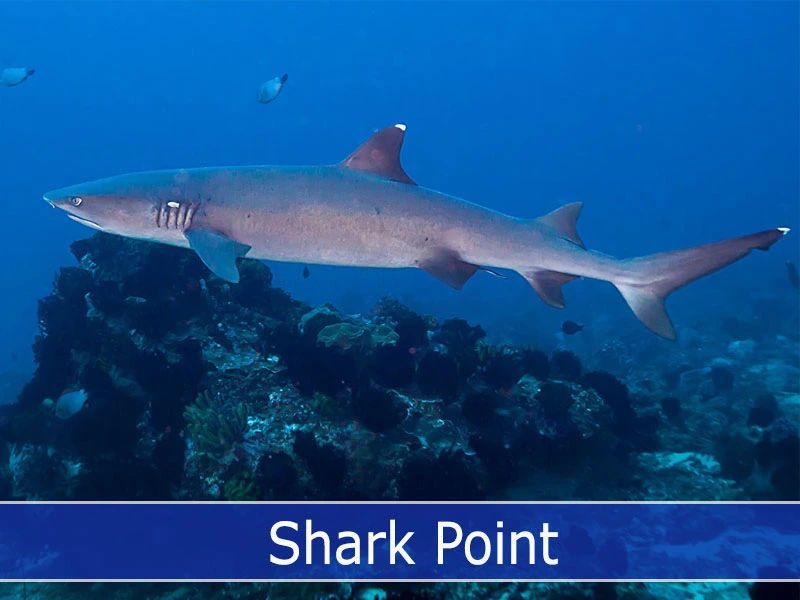
4. Shark Point
Found right in the corner of the Padang Bai harbour, Shark Point is a dive site named for its regular sightings of white-tip and black-tip reef sharks, also featuring beautiful coral formations and an array of reef fish.
Diving in Shark Point however is not always possible or easy as currents are often quite strong so checking the conditions is mandatory here.
The other dive sites in Padang Bai are: Silayukti Wall, and the Channel, but not as often visited as the ones mentioned earlier.
Nusa Penida
Nusa Penida is by far the highlight of scuba diving and snorkeling in Bali because this is where divers can enjoy the majestic Manta Rays and the best coral reefs Bali has to offer.
There are many dive sites in Nusa Penida and almost all of them are perfectly suitable for both beginner and advanced divers. But as a conclusion Nusa Penida offers the best of the Bali dive sites compared to the other locations.
In the months of June/July to October when the water temperatures drop significantly, advanced divers can dive deep for spotting the elusive Sun Fish also known as Mola Mola.

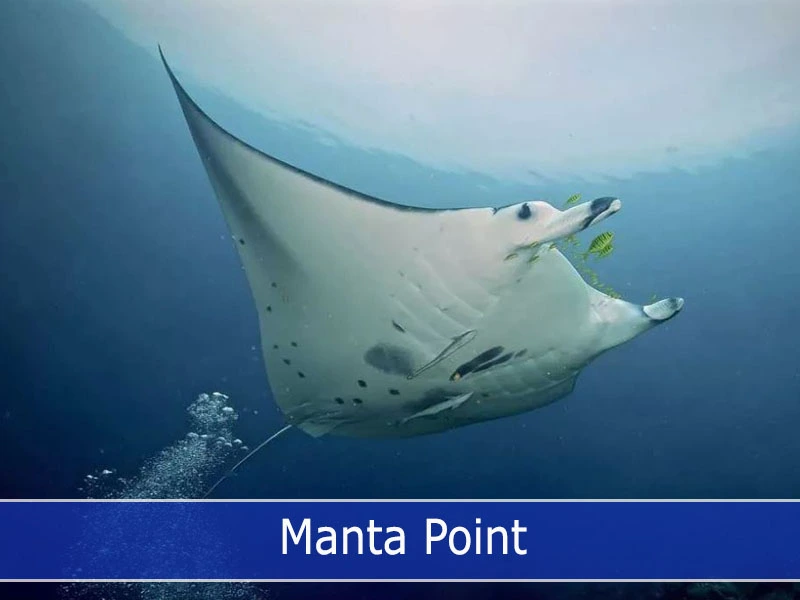
1. Manta Point
The most famous dive site in Nusa Penida and, without a doubt, one of the best diving spots in Bali for scuba diving, is the main attraction for anyone visiting Bali. This is where everyone can witness the awe-inspiring Manta Rays in Bali and experience unforgettable diving adventures.
Manta Point is a great small rocky bay with no beach where there is a Manta cleaning station. These gentle giants are almost always there with rare chances not to spot at least 1 or 2… more often as much as a great dozen.
Diving at Manta Point is an exhilarating experience that attracts divers from all over the world. The site is located on the southern coast of Nusa Penida, one of the three islands southeast of Bali, and it offers a unique opportunity to witness the majestic Manta Rays up close in their natural habitat. These graceful creatures, with their enormous wingspans and peaceful demeanor, create an unforgettable encounter for divers and snorkelers alike.
2. Crystal Bay
The second most famous dive site in Nusa Penida for scuba diving, Crystal Bay is known for its crystal clear waters, beautiful coral reef, and diverse tropical marine life. However, Crystal Bay is the main dive site to spot the Mola Mola during the right season.
The Mola Mola, also known as the ocean sunfish, is a massive and fascinating creature that attracts most of the advance divers from all around the world to Crystal Bay. This elusive species can grow to incredible sizes, sometimes reaching up to 3 meters in length and weighing over 2,000 kilograms. Their unique appearance and peculiar behaviors make them a thrilling sight for any diver lucky enough to encounter them.
Apart from the Mola Mola, Crystal Bay offers a variety of other marine life to admire. Colorful coral reefs house an abundance of tropical fish species, including parrotfish, angelfish, butterflyfish, and more. As most of the advance divers explore the depths, they may encounter manta rays gliding gracefully through the water, sea turtles peacefully swimming, and schools of barracuda shimmering in the sunlight.

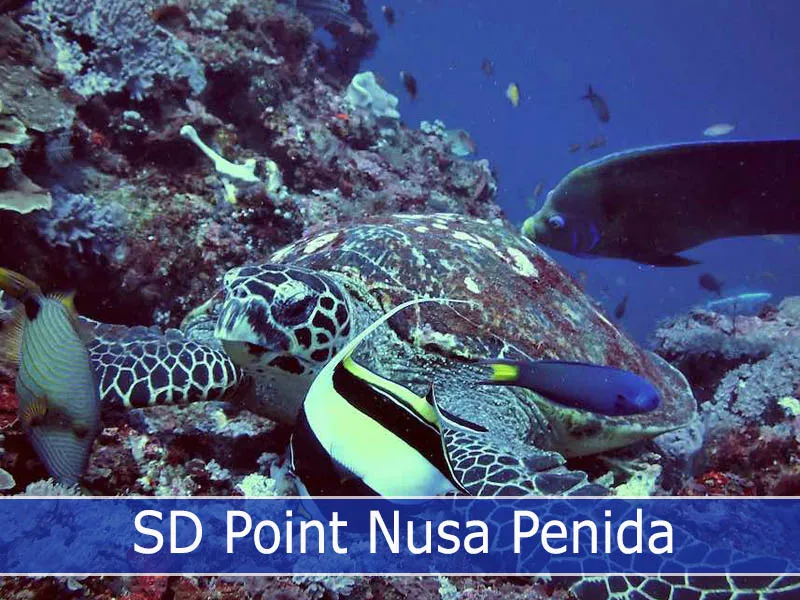
3. SD Point
SD Point is placed on the north side of the Nusa Penida island and, in our opinion, it is the best dive site of the area for scuba diving. SD Point is a magnificent drift dive, offering the most amazing coral reef ever seen for scuba diving. It’s like a never-ending movie, drifting gently on top of what you imagine to see in a tropical island while scuba diving.
As you drift along with the current, keep an eye out for the incredible variety of fish species that call SD Point home. Schools of vibrant tropical fish dart in and out of the corals, creating a mesmerizing display of colors and movement. Look closer, and you might spot some of the smaller critters, like colorful nudibranchs, camouflaged octopuses, and curious shrimp.
SD Point offers an unforgettable experience for divers of all levels, from beginners to seasoned professionals. Whether you’re a photography enthusiast, a marine biologist, or simply someone who appreciates the beauty of nature, SD Point will leave you with memories that will last a lifetime.
4. PED
PED is located right next to SD Point, and sometimes if you drift long enough you are basically drifting into PED. It has the same features and topography as SD Point, filled with marine life and stunning coral reefs.
Visibility in SD Point and PED are generally at least 20 meters long and water temperatures higher than Crystal Bay and Manta Point.
From Nusa Penida, it is easy to access the neighboring island of Nusa Lembongan and the few dive sites there. We will mention two of the most important ones: Blue Corner and Mangrove. Although Blue Corner is a drift dive with strong currents not suitable for beginner divers.

Amed
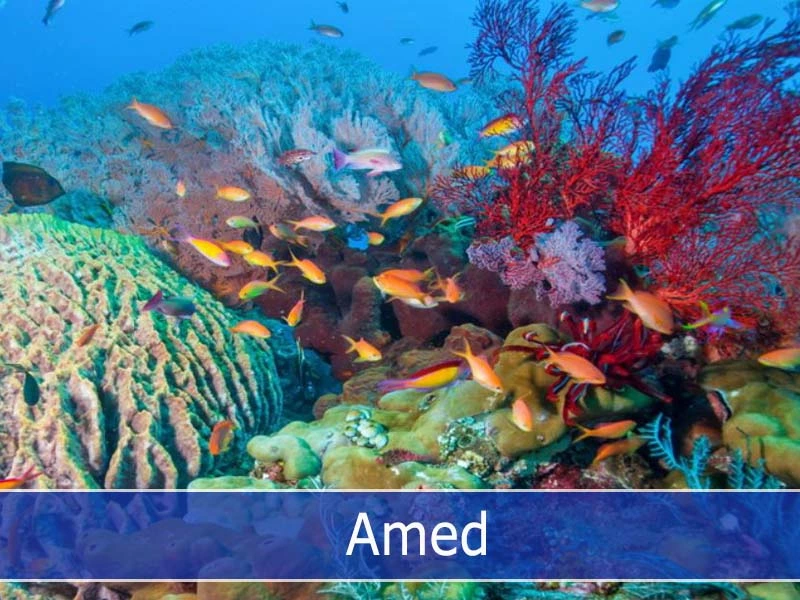
Amed is located near Tulamben on the east coast of Bali, yet another small fishing village that was boosted as a top diving location on the island with some of the best Bali dive sites. Amed is a lucky place with dive sites accessible both by boat as well as from the shore, with dive sites both artificial and natural.
Divers can explore its nooks and crannies, swim through cargo holds, and witness the fascinating transformation of this once devastating remnant into a vibrant ecosystem.
The dark waters reveal a different cast of marine creatures, and you may come across elusive creatures like cuttlefish and octopuses venturing out to hunt. The night dive also presents a chance to witness bioluminescence, a natural phenomenon that adds an enchanting touch to the underwater exploration.
1. Amed Wall
A beautiful wall dive with a diverse range of marine life, including reef fish, moray eels, and macro critters. The site is also known for sightings of reef sharks, barracudas, and occasionally, the ornate ghost pipefish. Amed Wall is one of the primary dive sites in the area.
Divers can find fascinating macro life such as nudibranchs, shrimp, and tiny crabs hiding in the crevices and corals. One of the highlights is spotting the elusive and delicate ornate ghost pipefish, which can be a challenge to find, but its otherworldly appearance makes it worth the effort.
Amed itself is a charming coastal village located on the northeast coast of Bali, Indonesia, known for its laid-back vibe, black sand beaches, and stunning sunrises over the nearby Mount Agung.
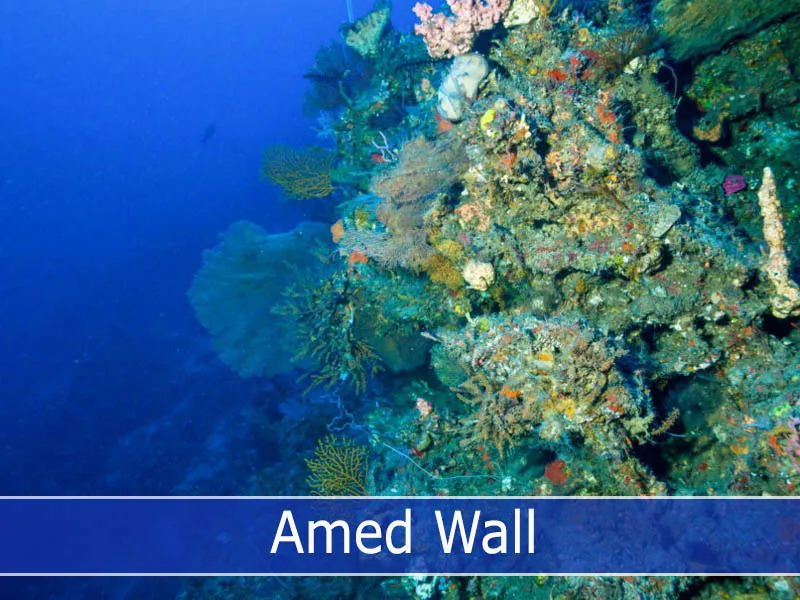
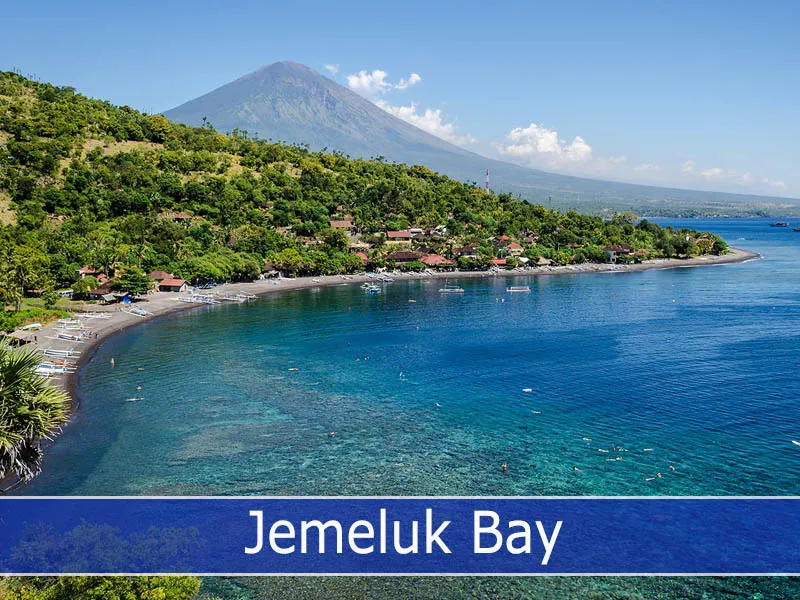
2. Jemeluk Bay
Used as the first dive of the day including night dives, Jemeluk Bay is a gentle sloping reef with vibrant corals and a wide variety of marine life, such as colorful reef fish, sea turtles, and critters.
Jemeluk Bay is both a natural and artificial dive site home to an underwater post box and a submerged temple for a unique diving experience.
The underwater temple, a creation by local artists and marine conservationists, serves as an artificial reef and an homage to the rich cultural heritage of the area.
The temple structure is carefully designed to promote the growth of corals, attracting more marine life to the site and providing a unique backdrop for divers to explore.
Dive operators in the area prioritize sustainable diving practices, ensuring that the marine ecosystem remains healthy and undisturbed for generations to come.
It offers an unforgettable experience that combines the wonders of the ocean with a touch of adventure and cultural appreciation, leaving every visitor with memories that will last a lifetime.
3. The Pyramids
Together with the earlier two dive sites, The Pyramids is part of the daily dive plan for Amed and up in the top of the best Bali dive sites. Pyramids is an artificial reef built by the local people of Amed made of pyramid-shaped structures, designed to attract and support marine life.
Divers can encounter a diverse range of species, from schools of fish to macro critters, as well as occasional reef sharks and rays.
The Pyramids are also a haven for macro critters. Camouflaged against the corals, you can spot various species of seahorses, pipefish, and nudibranchs.
These guides respect the delicate marine environment and ensure that divers adhere to responsible diving practices, such as not touching or disturbing the marine life.
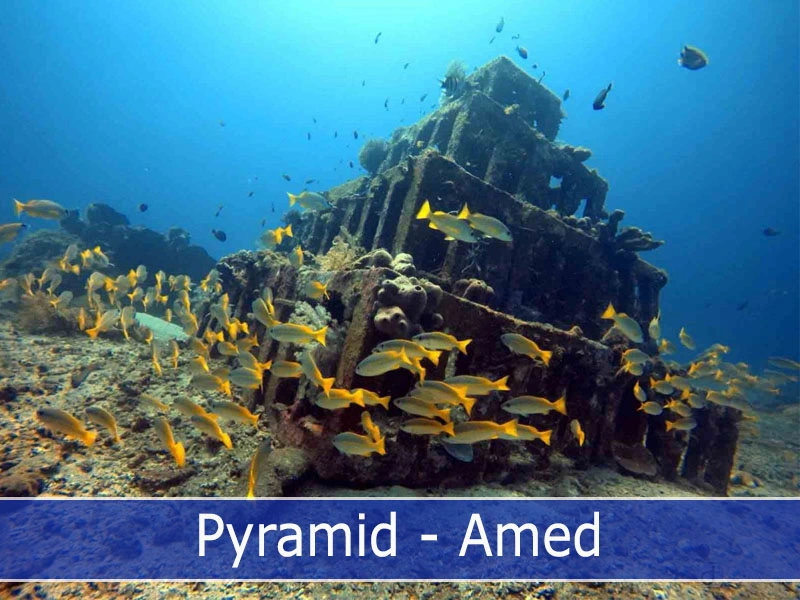
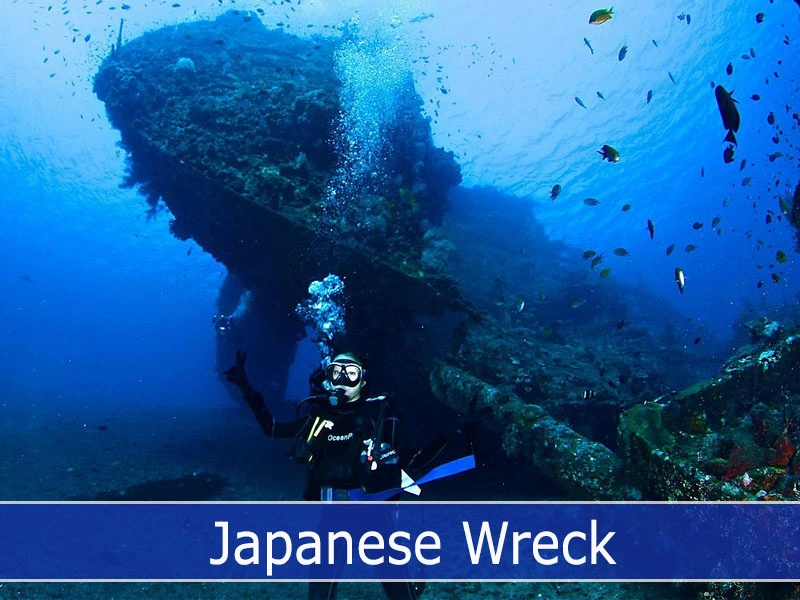
4. Japanese Wreck
Tulamben is not the only place with a wreck. Japanese Wreck is a small World War II-era Japanese shipwreck, located close to the shore in shallow waters. The wreck is encrusted with corals as it’s been submerged for a long long time.
Japanese Wreck is now home to an array of marine life, including scorpionfish, nudibranchs, and various reef fish but diving here needs careful timing as currents can sometimes be quite strong.
When is The Best Season to Dive in Bali?
The best time to explore Bali dive sites is ideal all year round, but divers typically prefer to avoid the rainy season from December to February. Besides the rain during those months, water conditions are generally not affected, but it’s true that sometimes the visibility can suffer.
The best time to visit is between March and June when the water temperatures in all of the Bali dive sites are changing and becoming lower, and the rainy season is over. However, after June, the water temperatures can go as low as 16°C (60°F), marking the beginning of the Mola season.
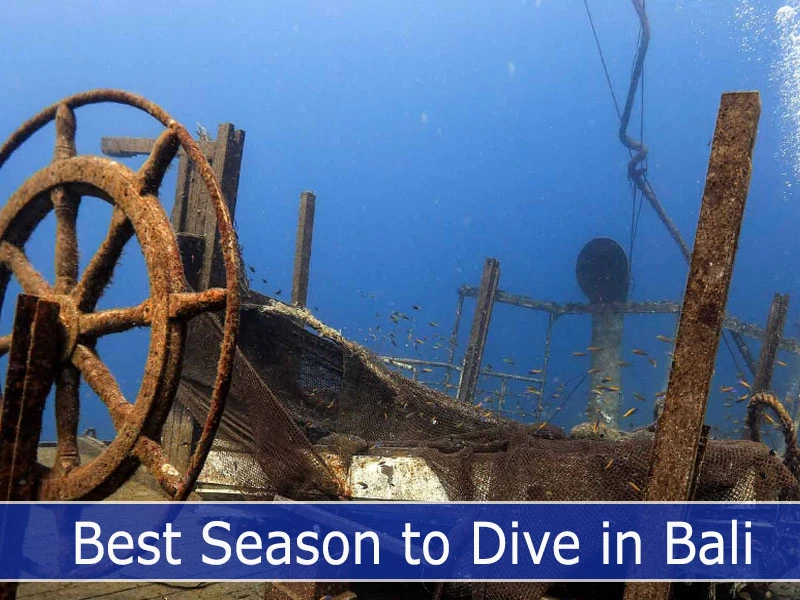
Where Should I Stay in Bali for Easy Access to the Bali Dive Sites?
Preferably and the best place to be if you are focused on diving is to stay in Sanur. A central located town in the center south coast of Bali which will facilitate easy access to all of the Bali dive sites. Staying in Kuta or Seminyak is also good but that adds an additional of 30 – 45 minutes to your daily travels while you save that time by staying in Sanur.
You can read more about diving in Bali and the Bali dive sites from PADI Travel.
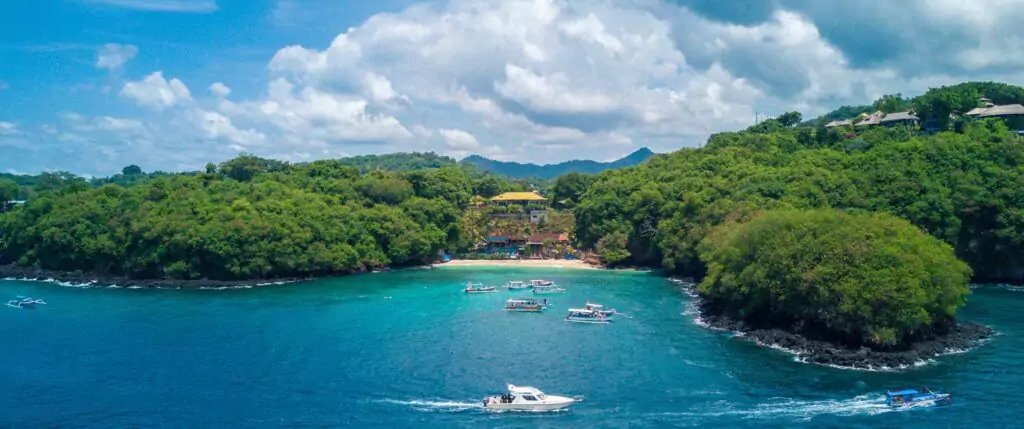
Frequently Asked Questions
What are some of the most popular dive sites in Bali?
Some of the most popular dive sites in Bali include Tulamben, Nusa Penida, Padang Bai, Amed, and Menjangan Island.
What kind of marine life can be seen in Bali's dive sites?
Bali's dive sites offer a wide variety of marine life, including manta rays, sharks, turtles, colorful fish, octopuses, and even sunfish during certain seasons.
When is the best time of year to dive in Bali?
Bali is a year-round diving destination, but the best time to dive is during the dry season from April to November when visibility is at its best.
What level of diving experience is required to dive in Bali?
Bali's dive sites cater to all levels of diving experience, from beginner to advanced. However, some sites may be more suitable for certain levels of experience.
What is the water temperature like in Bali's dive sites?
What is the water temperature like in Bali's dive sites?Bali's water temperature varies throughout the year, but it generally ranges from 26 to 29 degrees Celsius (79 to 84 degrees Fahrenheit).
What kind of diving certifications are accepted in Bali?
Bali's dive sites accept all internationally recognized diving certifications, including PADI, SSI, NAUI, and CMAS.
Are there any dangerous marine animals to watch out for in Bali's dive sites?
While rare, there have been sightings of oceanic whitetip sharks and blue-ringed octopuses in Bali's waters. Divers should always be cautious and follow their guide's instructions.
What is the visibility like in Bali's dive sites?
The visibility in Bali's dive sites can vary depending on the location, time of year, and weather conditions. Generally, visibility ranges from 10 to 30 meters (33 to 98 feet).
Can snorkelers also enjoy Bali's dive sites?
Yes, many of Bali's dive sites also offer great snorkeling opportunities for those who prefer to stay on the surface.
Are there any conservation efforts in place to protect Bali's dive sites?
Yes, there are several conservation efforts in place to protect Bali's marine life and dive sites, including coral reef conservation projects, beach cleanups, and responsible diving practices promoted by dive centers and organizations.